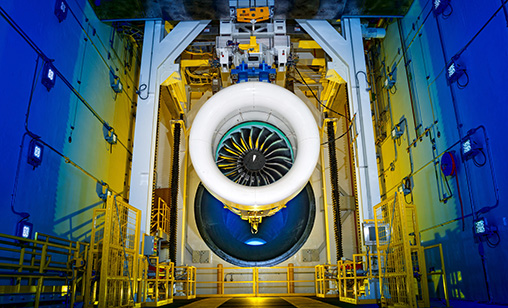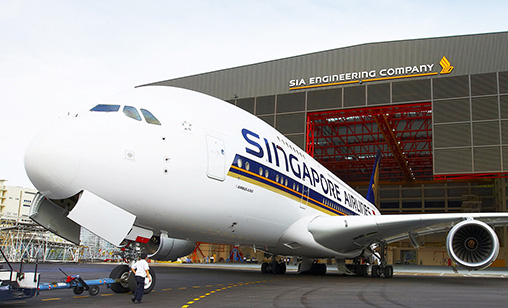Industry Insight Special Report
Air traffic recovery testing MRO capacity to unprecedented limits
For aircraft and engine MRO businesses the long-term future looks bright, but more immediately the sector continues to suffer from the pain of the pandemic, reports associate editor and chief correspondent, Tom Ballantyne.
August 1st 2024
Aircraft engine MRO has become a choke point for commercial aviation and the capacity shortage is likely to worsen, a recent Bain & Company study concludes. Read More »
The consultancy wrote airlines are facing historically high engine shop turnaround times, up by 35% or more for legacy engines and more than 150% for new generation engines compared with pre-pandemic rates.
 |
“Unless MRO companies act quickly to close this capacity gap, airlines will face higher costs to operate constrained fleets. The financial burden, on top of increasing costs in de-carbonising air travel, will likely slow passenger travel growth,” Bain’s global Aerospace and Defence practice co-leader, Jim Harris, said.
Despite Bain’s concerns about the engine sector, wider aerospace MRO business is recovering well from COVID. For example, SIA Engineering Company (SIAEC) has reported a net profit of $97.1 million in the year to March 31, an increase of 46% year-on-year. It also has reported its first full-year operating profit since the onset of the pandemic, an annual improvement of $28.6 million from an operating loss of $26.3 million for the previous 12 months.
Demand for MRO services looks healthy as global air travel and flight activities edge closer to pre-pandemic levels, SIAEC forecast. “However, a tight labour market, supply chain issues and inflation remain key concerns that weigh on our near-term operating margins,” it said.
“To address such challenges and strengthen our capacity, we continue to maintain cost discipline and leverage productivity improvements through our Continuous Improvement programme, including digitalisation and workforce up-skilling. In tandem, we continue to pursue strategies to amplify our MRO capabilities, capacities and geographical footprint with partnerships.”
In another sign of confidence in the sector, Evendale Ohio-based GE Aerospace has announced it will invest more than $1 billion worldwide in its MRO and component repair facilities to 2030. This year alone it will invest $45 million in its Singapore, Taipei, Kuala Lumpur and Seoul facilities.
“These investments will help GE Aerospace create capacity to meet growth in both the wide-body and narrow-body installed bases by adding engine test cells and equipment [at its shops],” it said.
“The funding will add cutting-edge technology, including enhanced inspection techniques, to reduce turnaround times for customers and expand component repair capability within its overhaul shops.”
 |
GE Aerospace president and CEO, Commercial Engines and Services, Russell Stokes, said its customers are experiencing strong air travel demand and GE is investing to increase capacity and efficiency to meet their growing needs and keep their planes flying safely and reliably.
Lufthansa Technik also is expanding its footprint in the region. It has opened a warehouse campus in Japan adjacent to Narita Airport in Greater Tokyo, to store components.
The facility will be developed as a hub for material supply, significantly enhancing local availability. Lufthansa Technik senior vice president corporate sales Asia-Pacific, Dennis Kohr, said: “The fact Lufthansa Technik has opened its first warehouse in Tokyo proves how important it is for us to strengthen our relationship with our Japanese customers. To continue growing together, we are pleased to offer the required service exactly where it is needed; expanding our strong market position in components we have in northern Asia.
“We plan to broaden operations and extend our support to other countries in the region.”
Another global MRO group, AAR Corp., is looking to expand in the Asia-Pacific. It posted record sales of $657 million in its fiscal 2024 fourth quarter, up 19% year-on-year. In March, it completed acquisition of the Triumph Group; a deal that includes four facilities in the U.S. and one in Thailand.
AAR president and CEO, John Holmes, said investing in the Thailand facility is an AAR priority. The shop handles structural repairs on parts such as nacelles for current generation aircraft popular in the Asia-Pacific - the 787 and the A350. “We will be one of the four providers of structural repair capability in the region to support these large fleets. That is organic growth as new aircraft mature.”
AAR also “sees opportunities” to add component and accessory repair capability in Thailand, Holmes said. “The competitive set is somewhat limited as a lot of that work comes back to the West. So we see a lot of opportunity by having a very solid footprint in Asia.” AAR also has a facility in Singapore and a component repair partnership with Air New Zealand.
| 'Uncommonly long delays for MRO ofengines are reducing the availability of airliners. Our analysis shows aircraft engine MRO demand is likely to near-term peak in 2026 and remain constrained to the end of the decade. The next big surge in demand from new generation engines will begin towards the end of 2030' |
| Bain and Company |
Overall, the global air transport MRO market was valued around $82 billion in 2023 and is expected to reach about $137 billion by 2033, with projected annual growth of 5.24%. The Asia-Pacific leads the table with a 35% share of global MRO business. The region’s airline MRO market was valued at near $29 billion in 2023 and is predicted to exceed around $48 billion by 2033.
Engine MRO remains the most critical MRO sector, with a 46% share of the market. According to Mordor Intelligence, engine MRO work in 2024 is worth around $40.15 billion and is forecast to increase to $54.68 billion by 2029.
This is one of the reasons vital providers must overcome the current supply crunch. The Bain report explains MRO engine shop visits deferred during the pandemic led to significant pent-up demand. “Then, newer generation CFM International LEAP engines and especially Pratt & Whitney GTF engines are requiring repairs in much greater numbers than anticipated due to an array of issues including powder metal contamination. In addition, there is insufficient delivery of new generation aircraft to customers as a result of supply chain constraints and quality setbacks,” the report said.
“Deferred deliveries mean airlines continue to rely on aging fleets that require servicing of greater complexity and have longer turnaround times”.
Adding to the list of challenges is a shortage of spare parts that is contributing to longer shop visits. “As airlines delay retiring legacy aircraft, in particular, Boeing 737NGs and A320ceo, supply of used parts is being impacted,” the report said. USM (Used Serviceable Materials) plays a critical role as a cost-effective, low-risk option to access life-limited parts. For some MRO shops, USM parts cover as much as 30% of total part demand.”
If MRO capacity continues on its growth trajectory, it is forecast demand for shop visits by 2030 will exceed supply by more than 17%; a shortfall that will impede air traffic growth by forcing operators to limit flights and routes.
To improve the situation, the report recommends the following strategies:
* Improve engine shop efficiency and productivity ahead of the next demand surge. MRO providers need to work with airlines on forecasts for MRO demand to help mitigate maintenance delays. The use of artificial intelligence (AI) and automation could also boost further productivity gains. For instance, computer vision is improving the accuracy and speed of inspections and boosting the productivity of smaller workforces. AI also can be used to improve knowledge management and employee decision-making and productivity.
* Expand piece part repair capacity and access to USM. By boosting the supply of used and repaired parts, MRO providers help relieve the overall demand for new OEM parts, further reducing repair queues.
* Build capabilities and scale the business. New generation fleets will be far larger in size to accommodate growing travel demand. MRO providers that plan for that will be able to capture a greater share of shop visits.